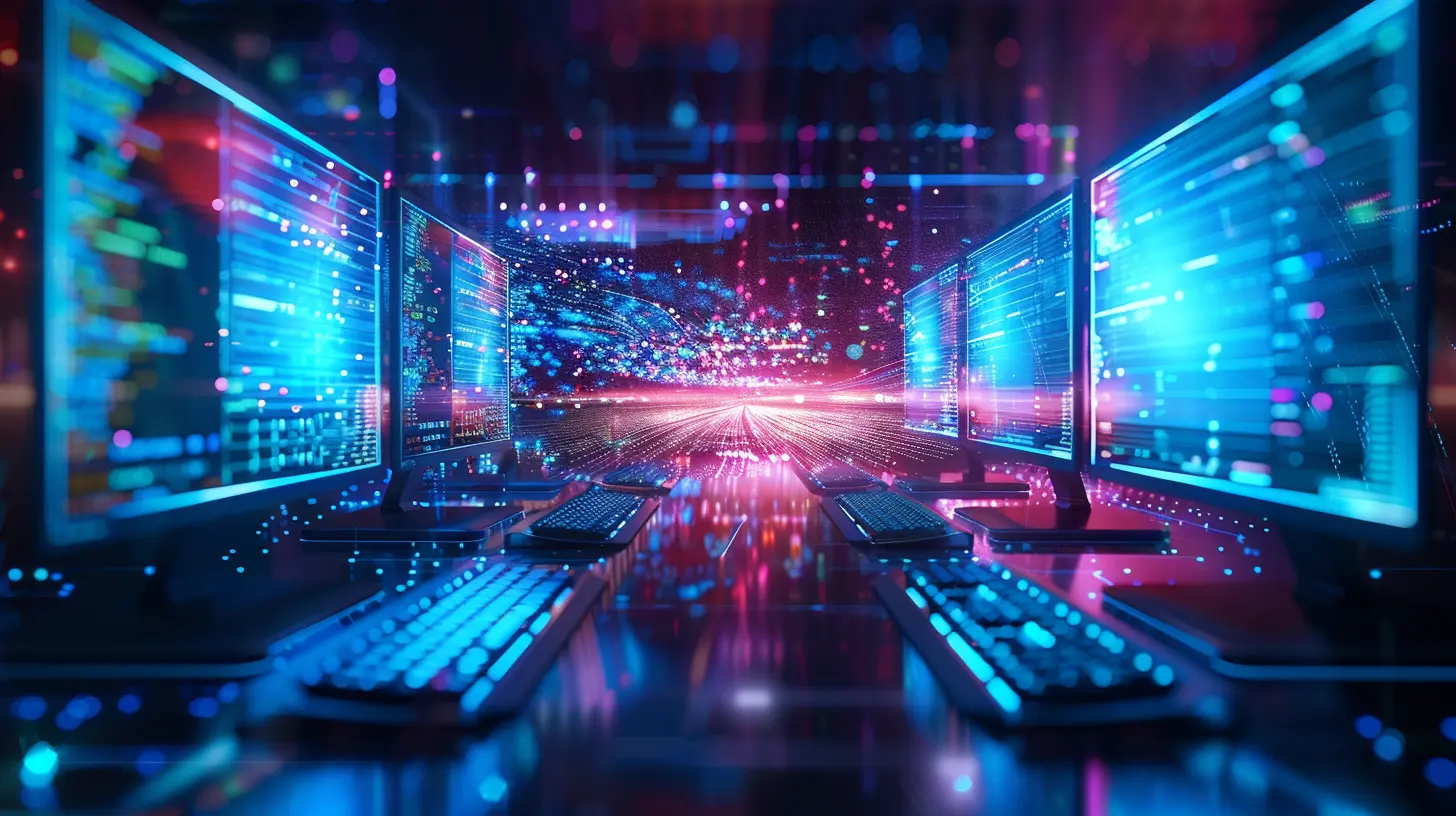Cybersecurity Trends: What You Need to Know to Stay Safe Online
29 June 2025
In a world where everything is connected, cybersecurity isn't just an optional add-on; it's an absolute must. With each passing year, the digital landscape evolves, and unfortunately, so do the threats lurking in the shadows. Whether you're a casual internet surfer or a corporate professional navigating sensitive data, staying safe online has never been more critical.
So, what’s the deal with cybersecurity in today's world? Well, let's dive into some key trends that you need to know to stay ahead of the curve and keep your digital life secure.

The Growing Importance of Cybersecurity
Let’s be real: we live in a hyper-connected world. From smart homes to online banking, almost every aspect of our lives is influenced by the internet. While it's great that we can control our thermostats from our phones or pay bills without leaving the couch, it’s not without risks. The more reliant we become on technology, the more attractive we are to cybercriminals.The truth? Cyberattacks are not just aimed at multi-billion-dollar corporations or government agencies. Individuals like you and me are just as vulnerable. And it's not just about losing your data; it’s your privacy, your finances, and even your identity that’s on the line.
So, what are the latest cybersecurity trends shaping how we protect ourselves online? Let’s break it down.

1. Artificial Intelligence (AI) in Cybersecurity
Friend or Foe?
One of the biggest buzzwords today is AI. It's popping up everywhere, from voice assistants to self-driving cars. In the world of cybersecurity, AI plays a double-edged role. On one hand, it's a powerful tool for defense. With AI, cybersecurity platforms can detect suspicious activities faster than humans ever could. It analyzes massive amounts of data, recognizes patterns, and acts quickly to counter threats.But here’s the catch: cybercriminals are also using AI to their advantage. They’re employing AI to develop more sophisticated malware that can adapt and evolve, making it harder for traditional security systems to catch.
Think of it like a chess game — both sides are constantly learning and adapting. For every new defense, there's a new form of attack. So, while AI offers fantastic potential to protect us, it also raises the stakes.

2. The Rise of Ransomware Attacks
Paying for Your Own Data?
Ransomware attacks are skyrocketing, and they’re becoming more ruthless by the day. Imagine waking up one morning and finding that every file on your computer is encrypted. You can’t access your photos, documents, or even your favorite playlist. Then, a pop-up demands a ransom for you to regain access. That’s ransomware in a nutshell.And here's the kicker: these attacks aren’t just targeting big corporations anymore. Small businesses and ordinary users are becoming prime targets. Why? Because most people don’t have the resources or knowledge to combat these attacks, making them an easier payday.
In 2021, ransomware attacks hit record highs, and 2022 wasn’t any kinder. This trend is not going anywhere soon. The best defense? Regularly back up your data and invest in a robust cybersecurity solution.

3. Zero Trust Security Model
Trust No One (Well, Sort Of)
If there’s one trend that’s gaining serious traction, it’s the “Zero Trust” security model. As the name suggests, the model operates under the assumption that no one, whether inside or outside your network, can be trusted by default. This concept is a radical shift from older security models that assumed anyone inside the network was safe.With Zero Trust, every user and device must be verified before being granted access to any resources. It’s like having a bouncer at every door of the club, not just at the entrance. This approach significantly reduces the chances of a cyberattack spreading once a hacker gets in.
Zero Trust is becoming especially important with the rise of remote work. With employees connecting from various locations and devices, companies can no longer rely on traditional firewalls alone to keep their data safe.
4. The Internet of Things (IoT) and Cybersecurity
Your Coffee Maker Could Be a Target
We’ve all heard of IoT — the Internet of Things. It’s the network of physical devices, vehicles, home appliances, and other objects embedded with sensors, software, and connectivity. While IoT makes life more convenient, it also opens up a whole new world of vulnerabilities.Picture this: Your smart fridge is connected to the internet. But what if it’s not secure? Hackers could use it as a gateway into your home network. Once they’re in, they can access other devices, like your laptop or smartphone.
As more and more devices go online, securing them becomes increasingly challenging. The problem is that many IoT devices lack proper security features, making them easy targets for cybercriminals. To stay safe, it’s essential to only use trusted devices, keep them updated, and change default passwords (because, yes, hackers know them too!).
5. Multi-Factor Authentication (MFA) is a Must
Passwords Alone Won’t Cut It
If you’re still relying solely on passwords to protect your accounts, it’s time for a change. Password breaches are more common than ever, and no matter how strong your password is, it might not be enough.Enter multi-factor authentication (MFA). MFA adds an extra layer of security by requiring you to verify your identity in multiple ways. For example, after entering your password, you might be asked to input a code sent to your phone or approve a login request on an app.
Think of MFA as a second lock on your front door. Sure, one lock might keep some people out, but having two makes it much harder for intruders to break in.
Many major platforms, like Google and Facebook, already offer MFA, and it’s becoming a non-negotiable feature for all online services. If you're not using it yet, you’re leaving yourself vulnerable.
6. Phishing Scams Are Getting Smarter
Don’t Take the Bait
Phishing scams are nothing new, but they’re getting more sophisticated. These scams trick people into providing sensitive information, like passwords or credit card numbers, by posing as legitimate entities. The emails used to be easy to spot — full of typos and suspicious links — but today’s phishing attacks are much harder to identify.Cybercriminals can now create emails that look almost identical to official communications from your bank, favorite online store, or social media platform. They might even use information gleaned from your social media accounts to make their messages more convincing.
The best way to protect yourself? Always double-check the sender's email address and never click on suspicious links. If an email seems off, it probably is.
7. Data Privacy is Becoming a Priority
Who’s Watching You?
In recent years, data privacy has become a hot topic. With massive data breaches making headlines and governments implementing stricter regulations, both companies and individuals are placing more emphasis on protecting personal information.The European Union’s General Data Protection Regulation (GDPR) set the stage for data privacy laws, and other countries are following suit. People are becoming more aware of how their data is collected, used, and shared. As a result, companies are being forced to be more transparent and accountable.
For individuals, it’s crucial to be mindful of the data you share online. Review privacy settings on your social media accounts, be cautious when giving out personal information, and use privacy-focused tools and browsers whenever possible.
8. Cloud Security is Under the Microscope
The Cloud Isn’t a Magic Shield
With more companies and individuals storing data in the cloud, cloud security has become a top concern. The cloud offers convenience and scalability, but it also presents unique security challenges.Many people assume that cloud providers handle all security aspects, but that’s not entirely true. While they do offer some security measures, the responsibility to protect data ultimately falls on the user. Misconfigurations, weak passwords, and insufficient encryption can all lead to breaches.
Think of the cloud like a storage locker. The locker company might provide a lock, but it’s up to you to make sure it’s properly secured. Always ensure that you’re following best practices when storing sensitive information in the cloud.
Final Thoughts: Staying Safe in a Digital World
We can’t avoid technology, and let’s be honest, most of us wouldn’t want to. But with great convenience comes great responsibility. Keeping up with the latest cybersecurity trends isn’t just for tech geeks; it’s for everyone. The threats are real, but the good news is that by staying informed and taking the right precautions, you can significantly reduce your risk.Whether it’s enabling multi-factor authentication, being cautious of phishing scams, or securing your IoT devices, the steps you take today can save you from a ton of headaches later. So, take your online security seriously — your future self will thank you.
all images in this post were generated using AI tools
Category:
Tech NewsAuthor:

Ugo Coleman
Discussion
rate this article
2 comments
Lumen Jordan
In an era where cyber threats evolve daily, complacency is your worst enemy. Invest in robust security tools, stay updated on phishing tactics, and prioritize strong passwords. Don't just react—proactively defend your digital life. Ignorance is not bliss; it’s an invitation to disaster. Stay alert, stay secure!
October 10, 2025 at 11:14 AM
Colette Chavez
As cyber threats evolve, so must our defenses. Stay informed, adopt a proactive mindset, and remember: in cybersecurity, complacency is the enemy. Safeguarding your digital self is an ongoing commitment!
July 11, 2025 at 4:43 AM

Ugo Coleman
Absolutely! Staying vigilant and proactive is crucial in the ever-changing landscape of cybersecurity. Your commitment to safeguarding your digital life is key!


